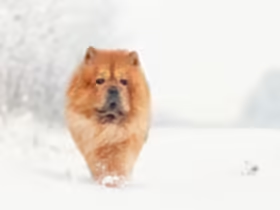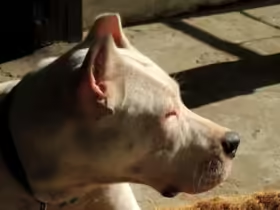Introduction
The bond between humans and dogs is one of the oldest and most unique relationships in the animal kingdom. For thousands of years, dogs have been more than just pets; they’ve been protectors, hunters, and loyal companions. But how did this remarkable transformation from wild wolves to our loving pets occur? This blog delves into the history of dogs, tracing their journey from fierce predators to the devoted and affectionate companions we cherish today.
Chapter 1: The Origin of the Wolf
The Ancestral Wolf
The story of the domestic dog begins with its wild ancestor, the wolf. Around 40,000 years ago, the world was a vastly different place, dominated by harsh climates and fierce predators. Among these predators was the wolf, a highly social and intelligent animal that lived in packs and hunted cooperatively. Wolves were widespread across Europe, Asia, and North America, thriving in various habitats from dense forests to open plains.
Wolves and Early Humans
At this time, early humans were also making their mark on the world. They were hunter-gatherers, moving in small groups, and they often found themselves in competition with wolves for the same prey. Despite this competition, it’s believed that wolves and humans began to interact in ways that would eventually lead to the domestication of the wolf. Some wolves, perhaps the more curious or less aggressive individuals, started to follow human groups, scavenging from their kills and campsites.
Chapter 2: The Path to Domestication
Mutual Benefits
The relationship between wolves and humans was mutually beneficial. The wolves that scavenged near human camps had easier access to food, while humans gained an alert system, as the wolves would bark or growl at approaching dangers. Over generations, this relationship grew stronger. Wolves that were more tolerant of humans were more likely to survive and reproduce, leading to a gradual process of domestication.
Natural Selection and the Taming Process
As wolves continued to live closer to human camps, they began to change both behaviorally and physically. These changes were a result of natural selection, where traits that made wolves more suited to living with humans were passed down to future generations. Wolves that were less aggressive, more sociable, and smaller in size were more likely to survive and thrive in the human environment. Over thousands of years, these traits became more pronounced, and the first domesticated dogs began to emerge.
Early Roles of Domesticated Dogs
The earliest domesticated dogs were not pets in the way we think of them today. Instead, they played crucial roles in the survival of early human societies. Dogs were used for hunting, helping to track and capture game that was vital for human sustenance. They were also used for protection, guarding campsites against other predators and human intruders. The bond between humans and dogs continued to grow as they became increasingly reliant on each other.
Chapter 3: The Spread of Domesticated Dogs
Dogs Across Ancient Civilizations
As human societies evolved and spread across the globe, so too did their canine companions. Archaeological evidence suggests that domesticated dogs were present in human communities as far back as 14,000 years ago. These early dogs were found in a variety of cultures, from the frozen tundras of Siberia to the deserts of the Middle East.
Dogs in Ancient Egypt
One of the most well-documented ancient civilizations to have a close relationship with dogs was Ancient Egypt. Dogs were revered in Egyptian culture, often associated with the god Anubis, who was depicted as a man with the head of a jackal or dog. Dogs were not only companions but also held ceremonial and religious significance. They were often buried with their owners, and some were even mummified, indicating their importance in Egyptian society.
Dogs in Ancient China
In Ancient China, dogs were also highly valued, particularly for their roles in hunting and as guardians. The Chinese bred specific types of dogs for different purposes, such as the mastiff-like dogs used for guarding property and the smaller, more agile breeds used for hunting. Dogs were considered symbols of loyalty and protection and were often featured in Chinese art and literature.
Chapter 4: The Evolution of Dog Breeds
Selective Breeding
As human societies became more settled and advanced, so did their methods of breeding dogs. Selective breeding began to shape dogs for specific tasks, leading to the development of distinct breeds. This process accelerated during the agricultural revolution, where dogs were bred for herding livestock, guarding property, and even companionship.
The Rise of Dog Breeds in Europe
In Europe, particularly during the Middle Ages, selective breeding became more sophisticated. Different breeds were developed for hunting, herding, guarding, and other tasks. For example, the Greyhound was bred for its speed and agility, making it an excellent hunting dog, while the Mastiff was bred for its strength and protective nature, ideal for guarding estates.
Companion Dogs and the Birth of Toy Breeds
While many dogs were bred for work, the concept of dogs as companions also took root. Nobility and royalty began to keep small, affectionate dogs as pets. These dogs were often bred to be small, with appealing features that made them ideal lap dogs. Breeds like the Pomeranian, the King Charles Spaniel, and the Pekingese were among the first toy breeds, specifically bred for companionship rather than work.
Chapter 5: Dogs in the Modern Era
The Industrial Revolution and Dogs
The Industrial Revolution brought significant changes to human society, and dogs were affected as well. With the rise of urbanization, the roles of dogs began to shift. While many dogs continued to work as hunters, herders, and guards, the idea of dogs as household pets became more widespread. The Victorian era in Britain was particularly influential in shaping modern perceptions of dogs. Queen Victoria herself was a dog lover, and her fondness for certain breeds, such as the Pomeranian, helped popularize them.
The Birth of Dog Shows and Kennel Clubs
The 19th century also saw the rise of dog shows and the establishment of kennel clubs. These institutions formalized the breeding and classification of dog breeds, creating standards for what each breed should look like and how they should behave. The first dog show was held in England in 1859, and the Kennel Club was founded in 1873. These developments further solidified the role of dogs as both working animals and companions.
Dogs in Popular Culture
As dogs became more ingrained in human society, they also began to appear in popular culture. From literature to film, dogs have been depicted as loyal, brave, and loving companions. Books like “Lassie Come-Home” and films like “Old Yeller” have cemented the image of the dog as man’s best friend in the collective consciousness. This portrayal has only strengthened the bond between humans and dogs, making them beloved members of countless households.
Chapter 6: The Science of Dog-Human Bonding
Why Dogs and Humans Bond So Strongly
The bond between dogs and humans is not just a cultural phenomenon; it has biological roots. Research has shown that interactions between dogs and humans can trigger the release of oxytocin, a hormone associated with bonding and affection. This mutual release of oxytocin helps to explain why dogs are so attuned to human emotions and why they can provide comfort and companionship in ways that few other animals can.
The Role of Dogs in Modern Society
Today, dogs continue to play a variety of roles in society. While many are cherished pets, others serve as working dogs in roles such as search and rescue, therapy, and assistance for people with disabilities. The versatility of dogs and their ability to form deep emotional connections with humans make them invaluable in these roles.
The Future of Dogs in Human Society
As our understanding of dogs continues to evolve, so too does their place in our lives. Advances in genetics and veterinary medicine are helping us to better care for our canine companions, ensuring that they can live longer, healthier lives. The rise of pet-friendly policies in workplaces, hotels, and other public spaces reflects the increasing importance of dogs in modern society. As we move forward, the bond between humans and dogs is likely to grow even stronger.
Conclusion
The history of dogs is a testament to the incredible relationship between two very different species. From their origins as wild wolves to their roles as hunters, protectors, and companions, dogs have evolved alongside humans in a way that no other animal has. This journey has shaped not only the development of dogs but also the course of human history. As we continue to share our lives with these loyal and loving animals, we honor a bond that has been thousands of years in the making, one that is sure to endure for generations to come.











Leave a Reply